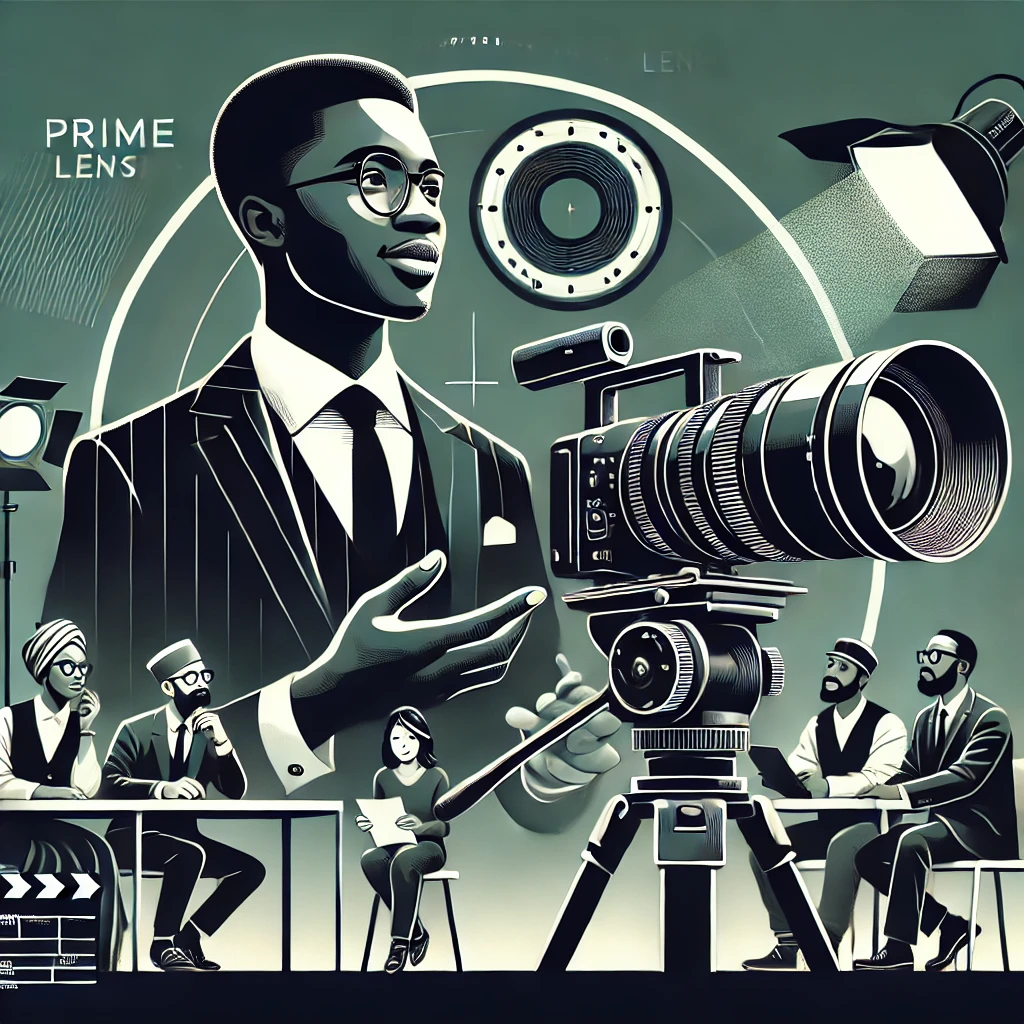Table of Contents
Framing the Emotion
Picture a scene from a Nollywood film: a character’s subtle emotional shift captured in exquisite detail, the background melting into a soft, dreamy blur. That kind of visual poetry doesn’t happen by accident, but because a filmmaker chose the right lens.
What Lenses Really Do for Storytelling
Lenses are more than technical tools. They are the filmmaker’s paintbrush, shaping the mood, the distance, and even the intimacy of a scene. In Nollywood, where stories often unfold through close human relationships, community energy, and cultural texture, your choice of lens can be the difference between a scene that simply informs and one that moves your audience deeply.
Understanding the difference between prime and zoom lenses is one of the most practical ways to take control of your film’s visual style.
Prime Lenses
A prime lens has a fixed focal length. No zooming in or out. If you want to change your shot, you have to move your feet. That might sound like a limitation, but it’s actually a gift.
Prime lenses often deliver sharper images, richer background blur, and better performance in low light. Because they have fewer internal moving parts, the glass is simpler, and that simplicity shows up in the picture.
Many Nollywood filmmakers love using a 50mm prime lens. It’s affordable, fast, and flattering. It works especially well in indoor scenes, close-ups, and emotional dialogue sequences. Prime lenses demand a more deliberate style of shooting, which can help you slow down and think more critically about composition and framing.
Zoom Lenses
Zoom lenses are built for movement. With one twist of the ring, you can go from a wide establishing shot to a tight close-up without ever changing your position. That makes them perfect for fast-paced shoots, unpredictable environments, or projects with limited crew.
In Nigeria, where filming in public spaces can be chaotic or rushed, zoom lenses allow you to adapt in real time. You don’t always have the luxury of setting up three camera angles or switching lenses on the spot.
A good zoom lens can cover a lot of ground: 24-70mm or 70-200mm are popular choices. They save time, reduce gear changes, and let you stay in the moment—especially useful for documentaries, event coverage, or action scenes.
What’s the Difference, Really?
The main divide comes down to this: prime lenses offer purity and control, while zoom lenses offer speed and convenience. Prime lenses generally provide sharper images and better low-light capability. Zoom lenses trade a little image quality for the ability to work fast and react quickly.
If you’re shooting a controlled drama, a prime lens might help you achieve a cleaner, more cinematic look. If you’re filming a bustling street scene in Lagos with no time to change lenses, a zoom might save your whole shoot.

How Nollywood Cinematographers Use Their Glass
Nollywood isn’t always about the fanciest gear. It’s about what you do with what you have. And in many cases, Nigerian filmmakers have turned limitations into strengths.
Some of the most powerful scenes in Nollywood cinema are shot with just one or two prime lenses. Directors favoring emotional intimacy often stick to a 35mm or 85mm prime to bring the audience closer. Meanwhile, action or docu-style productions rely on zooms to stay nimble and responsive.
The truth is, many Nollywood productions use a hybrid approach—switching between primes and zooms depending on the scene and location. It’s not about picking a side. It’s about understanding when to use each tool.
What You Should Think About Before Choosing
Start with your story. What mood are you creating? How controlled is your set? Do you need speed or precision?
Also think about your budget. A solid 50mm prime lens is cheaper and sharper than most mid-tier zoom lenses. But if you can only afford one lens for a variety of setups, a versatile zoom might stretch further.
Then there’s your shooting style. If you like to plan shots carefully and take your time, primes reward that discipline. If you like to stay on your toes and follow the action, zooms will have your back.
Where Lenses Are Headed
Lens tech keeps getting better. Materials are lighter. Focus motors are faster. Optical coatings reduce glare and ghosting. Even image stabilization is improving, making it easier to shoot handheld in rough conditions.
For Nollywood, this means more access to professional-level performance without the professional-level price tag. And as more local cinematographers master the craft, expect even more visually ambitious films to emerge. We are definetely starting to see that with the new slate fo films coming out of Nollywood currently.
Final Thoughts
Choosing between a prime and a zoom lens isn’t about gear bragging rights. It’s about knowing what story you want to tell and picking the right tool to bring it to life.
Sometimes you need the precision and artistry of a prime lens. Sometimes you need the hustle and versatility of a zoom. Both have their place in Nollywood.
Whatever lens you choose, remember that the most powerful thing you can put behind it isn’t glass. It’s your perspective.














Leave a comment